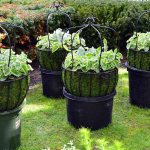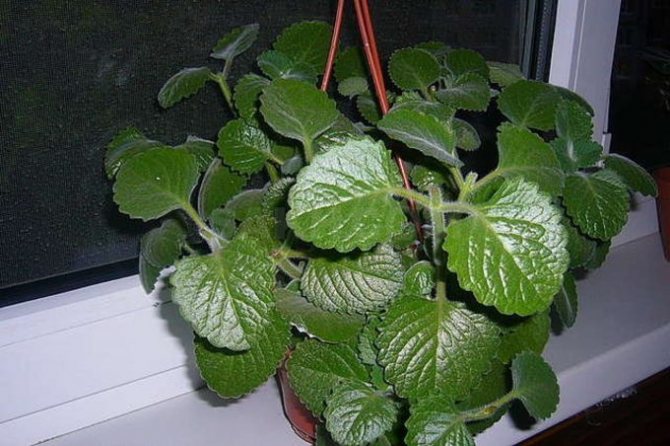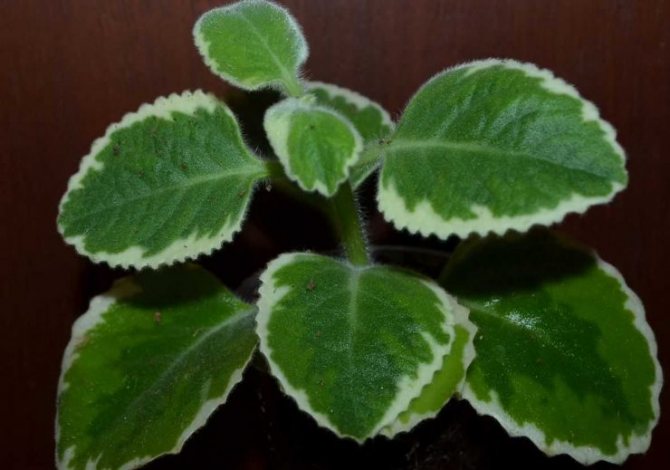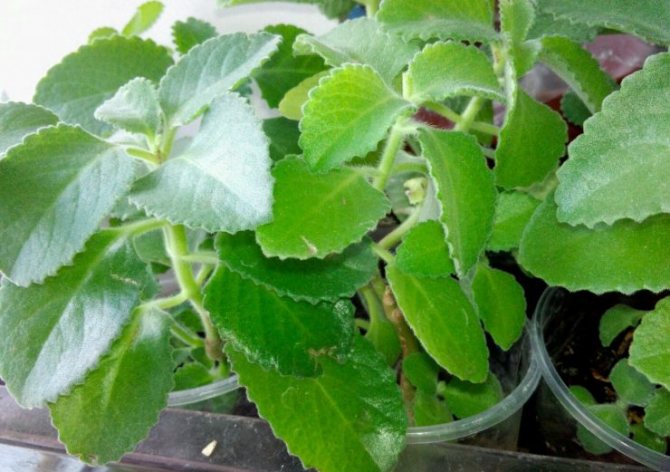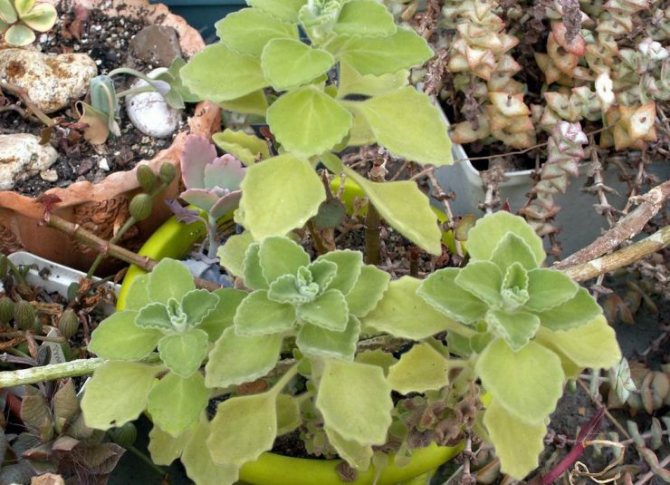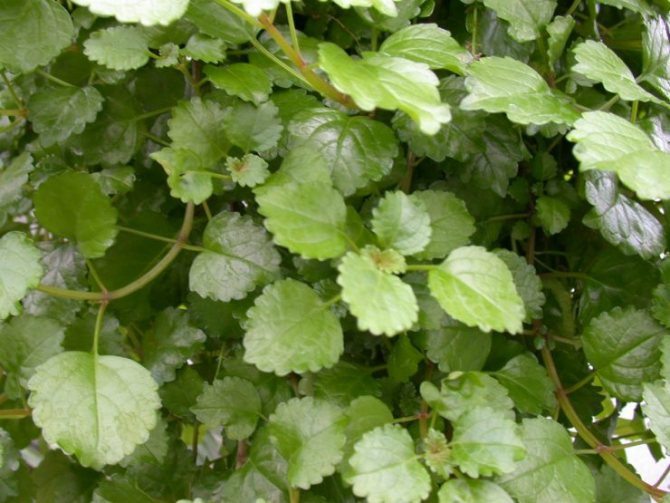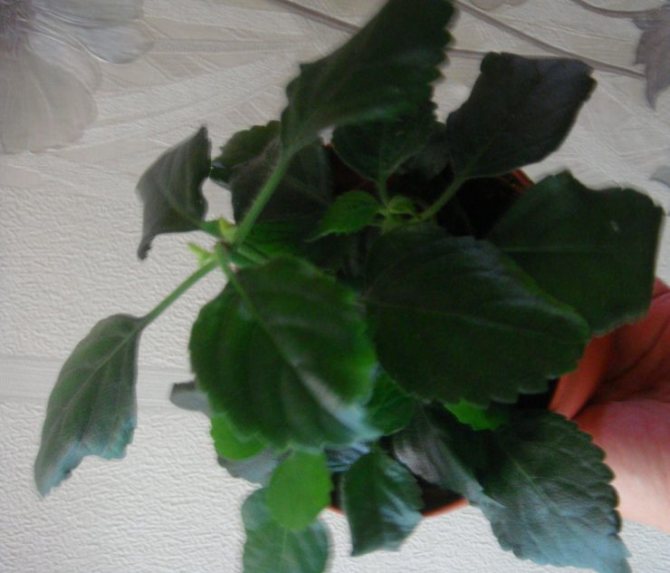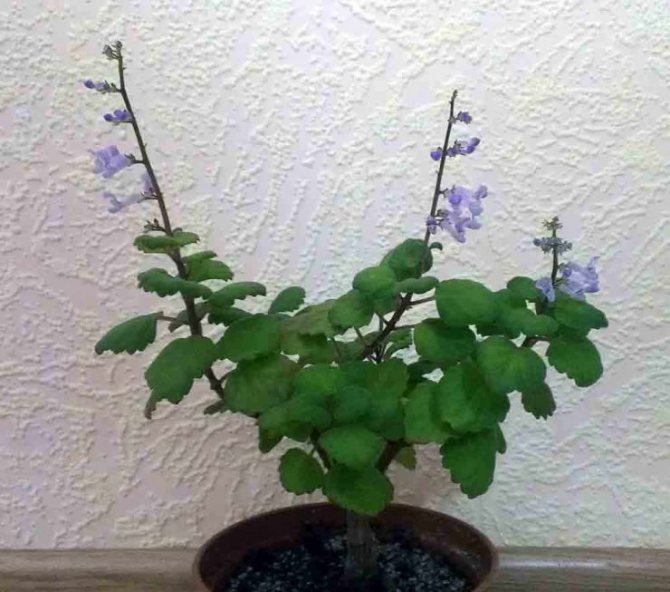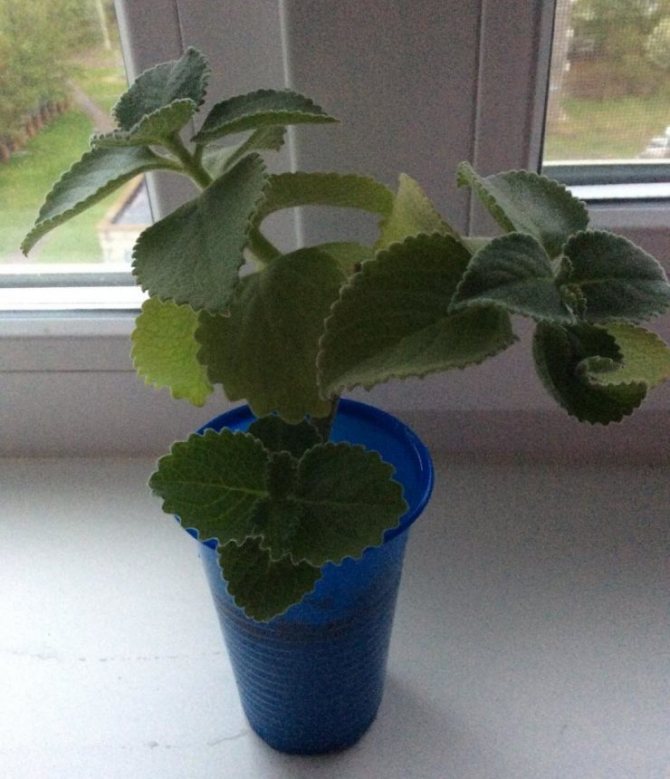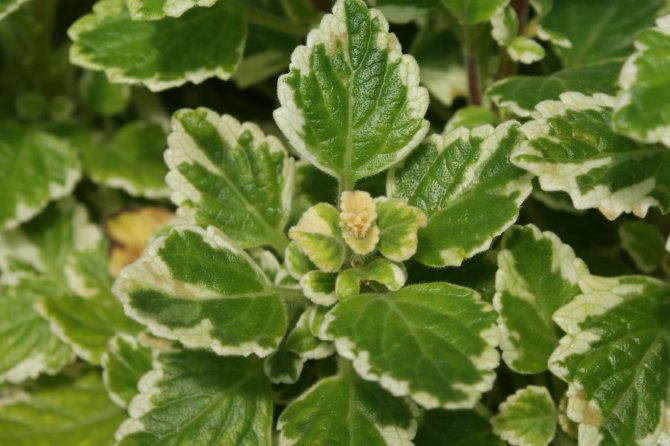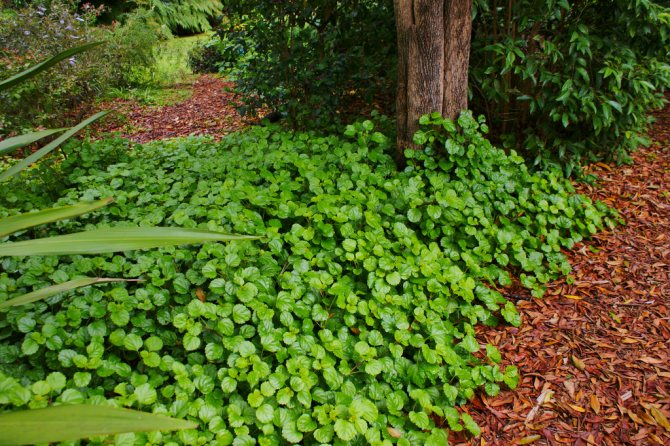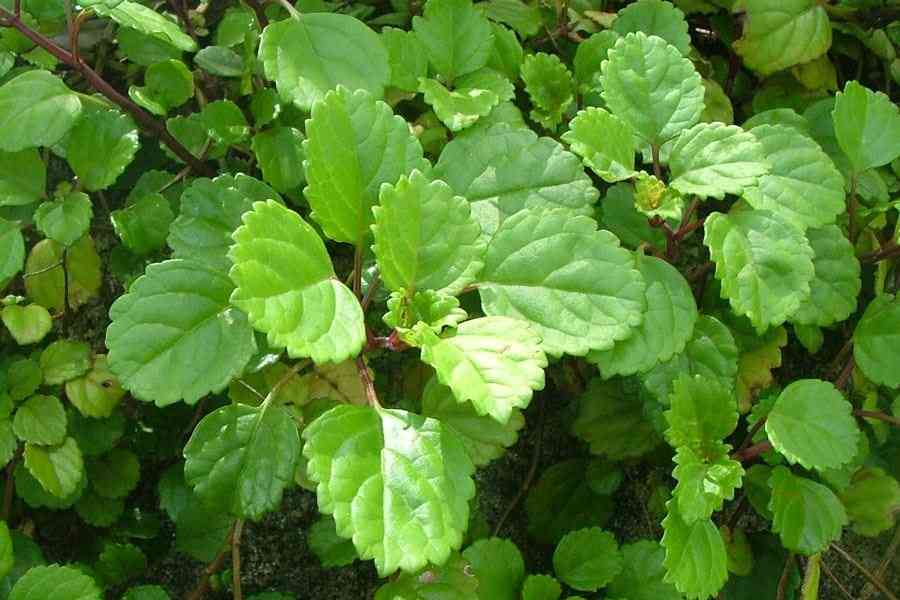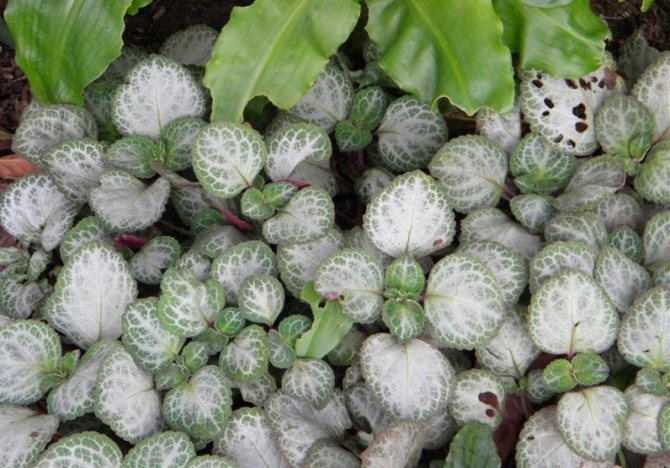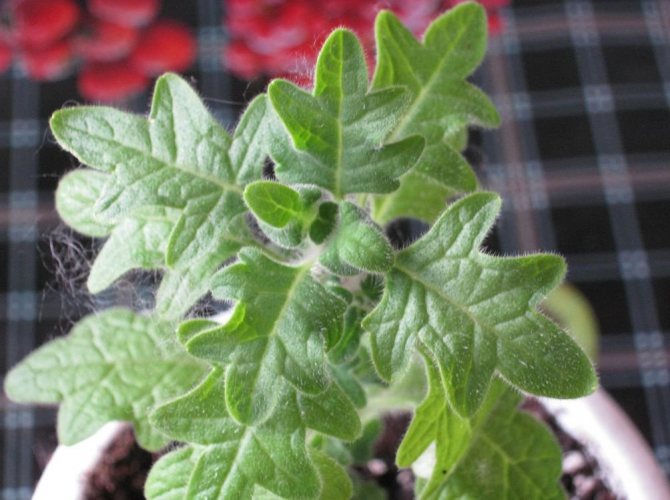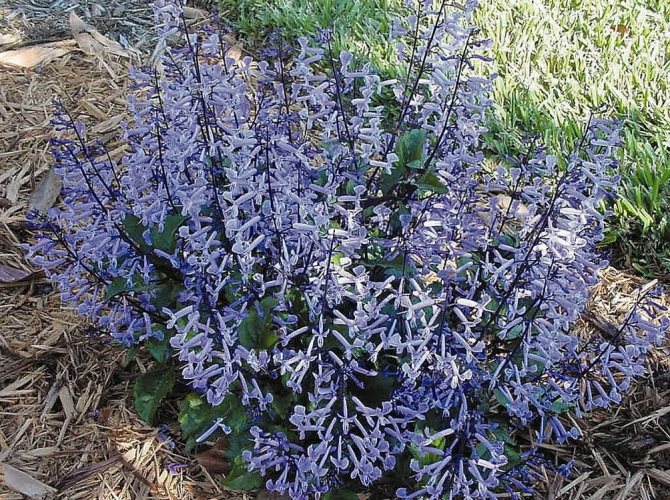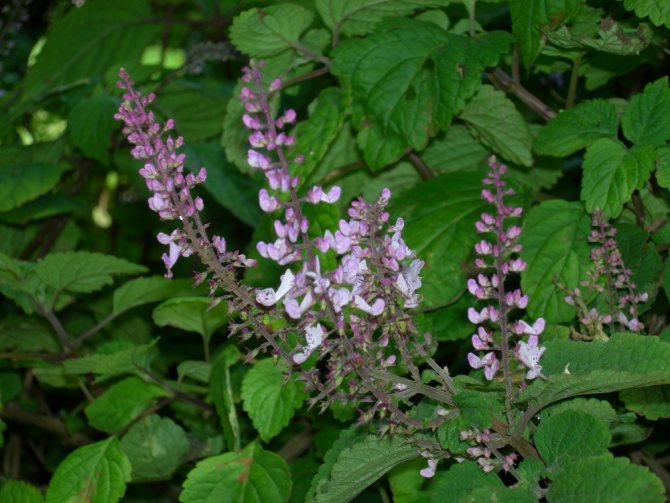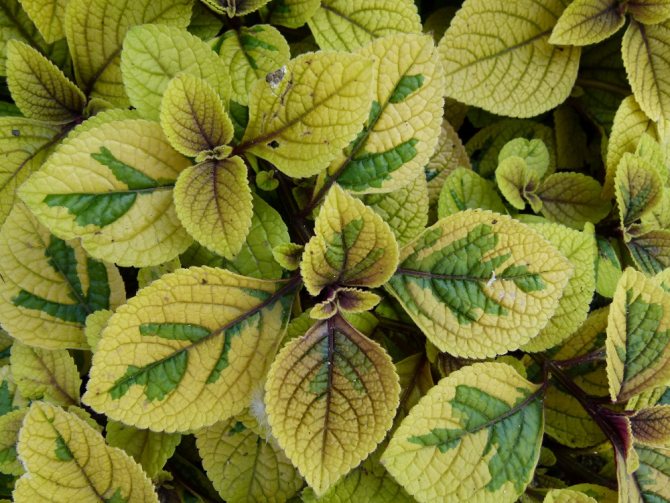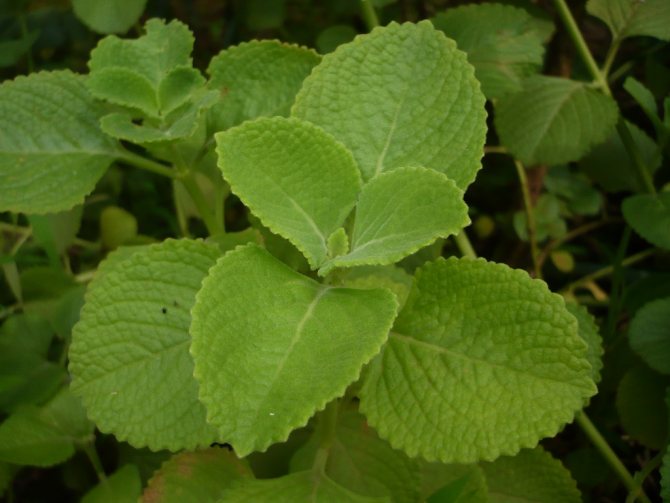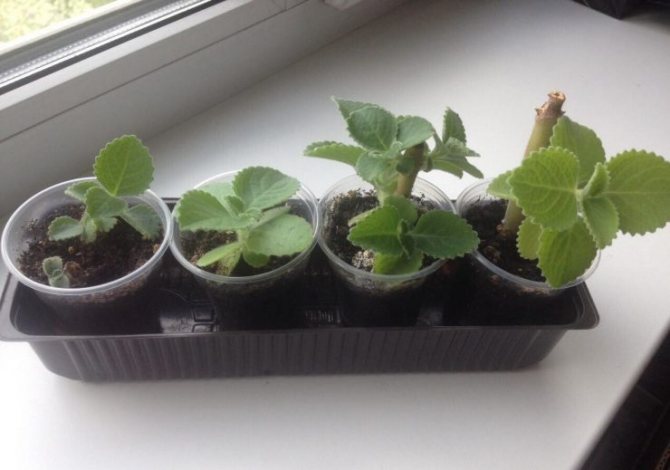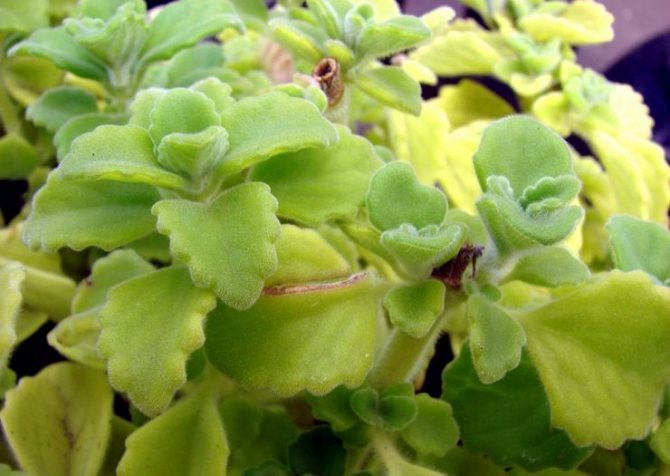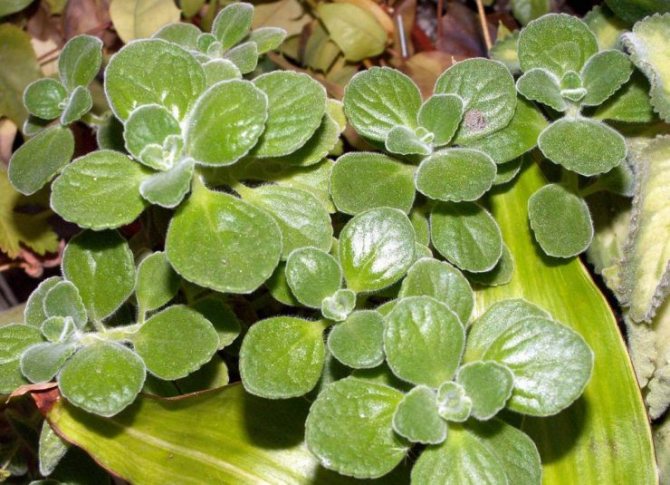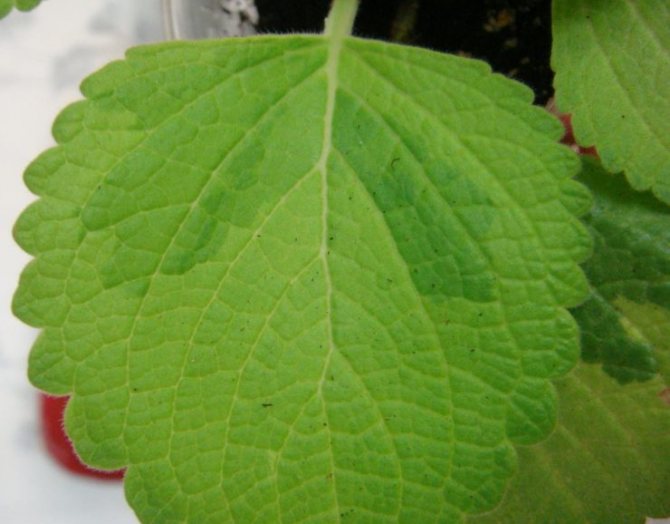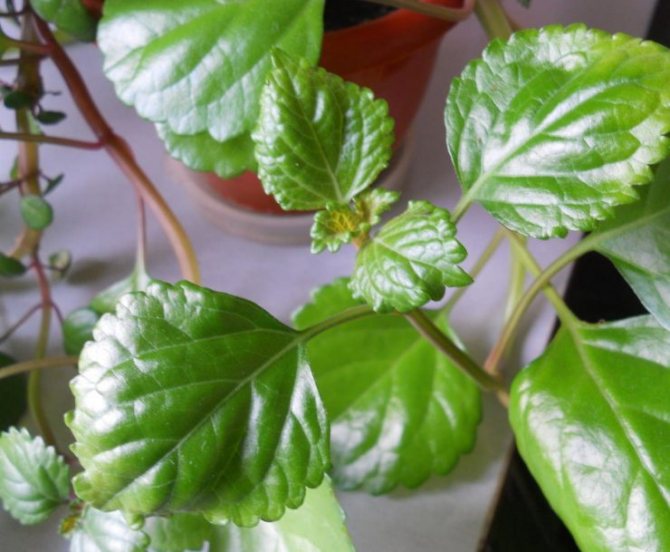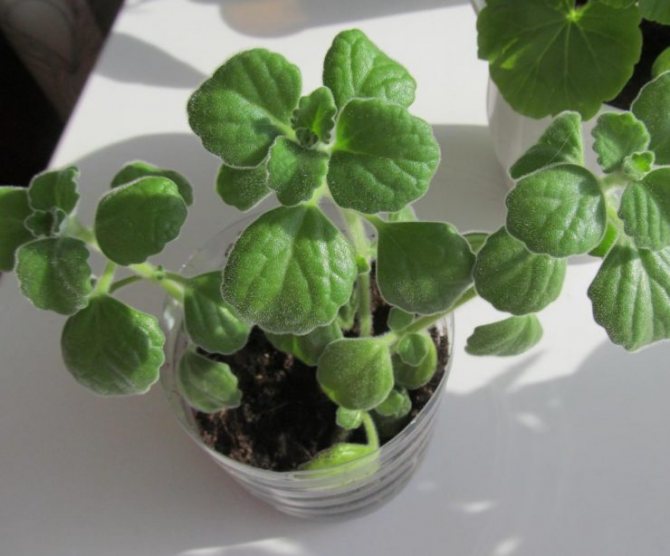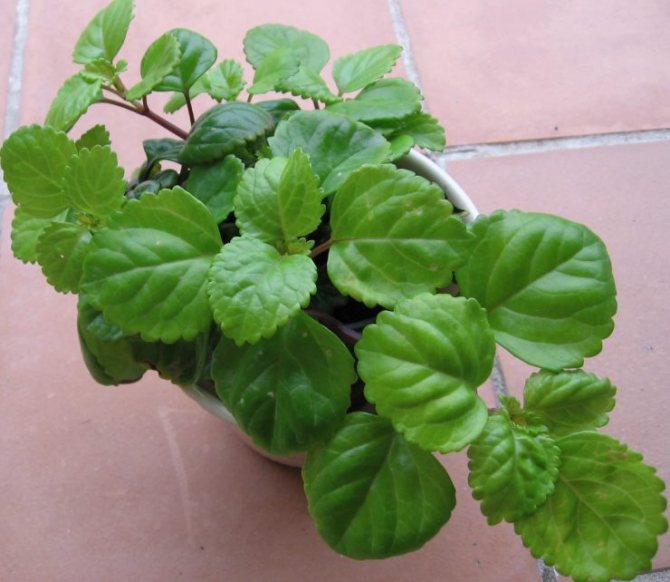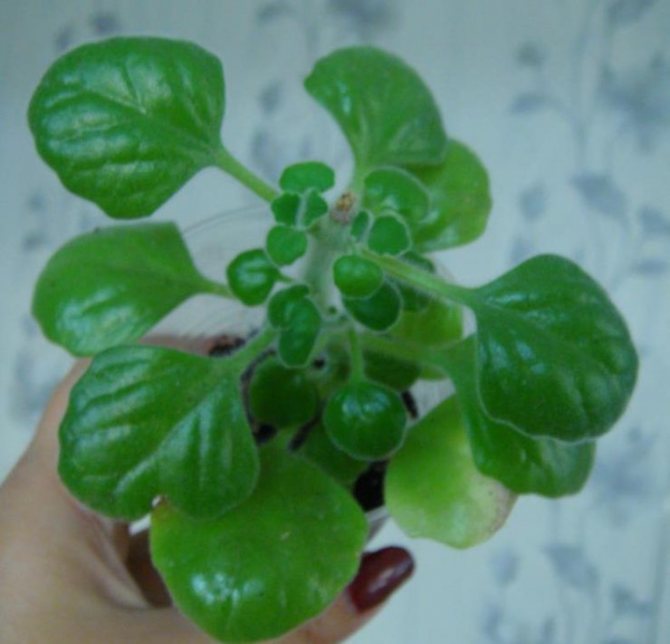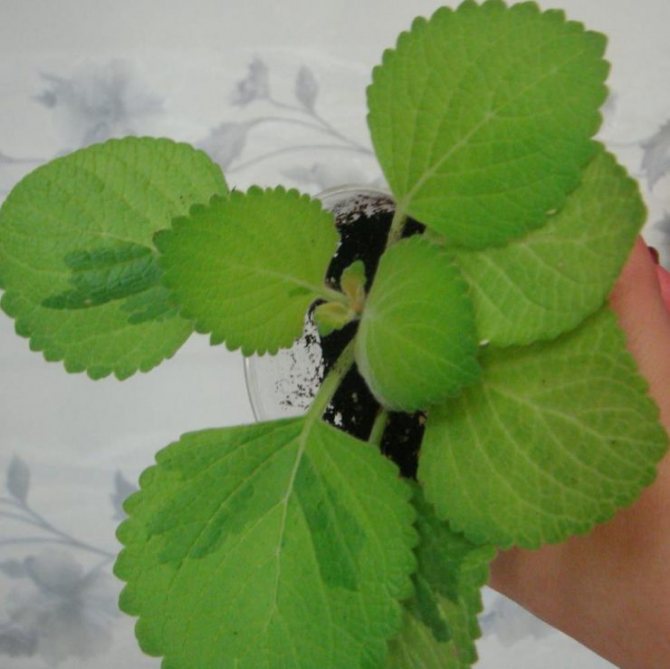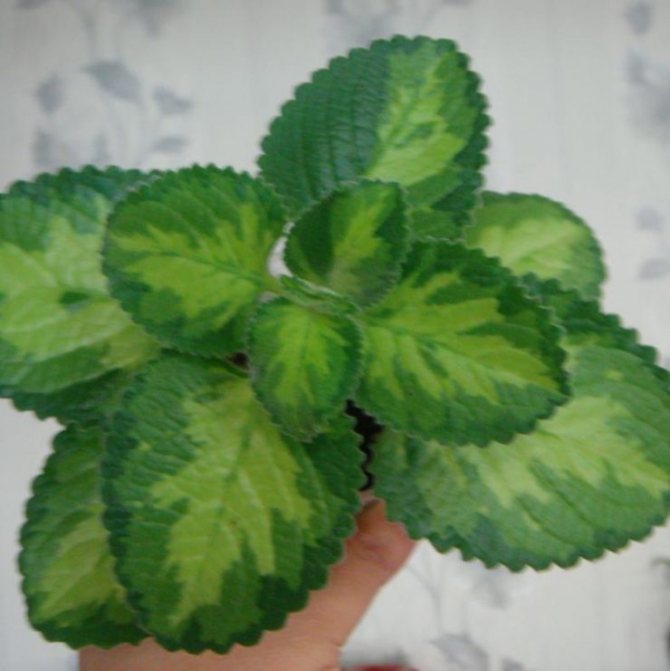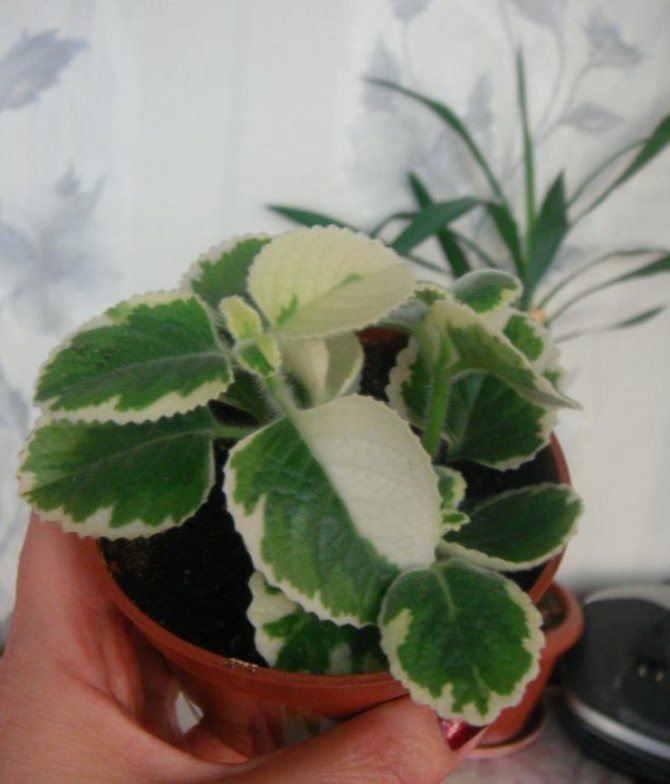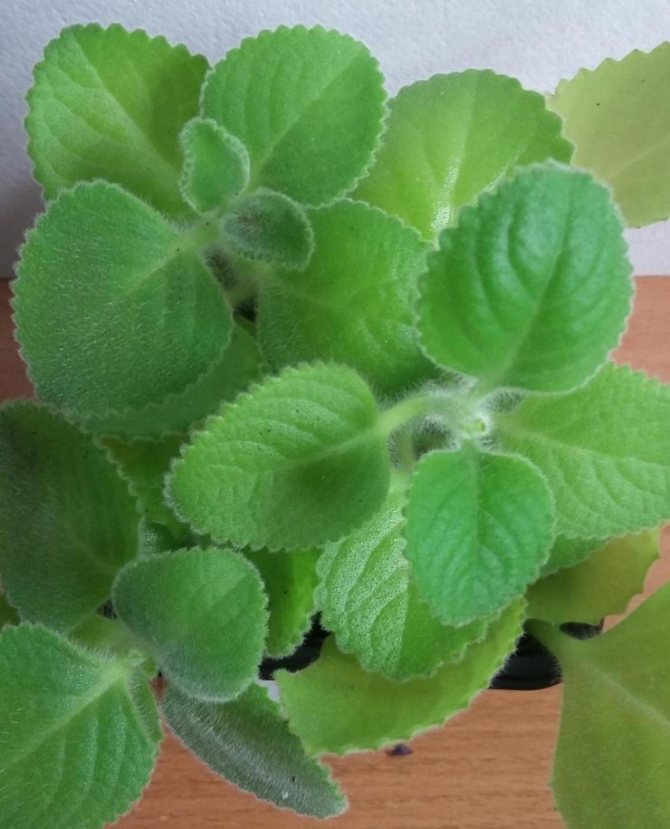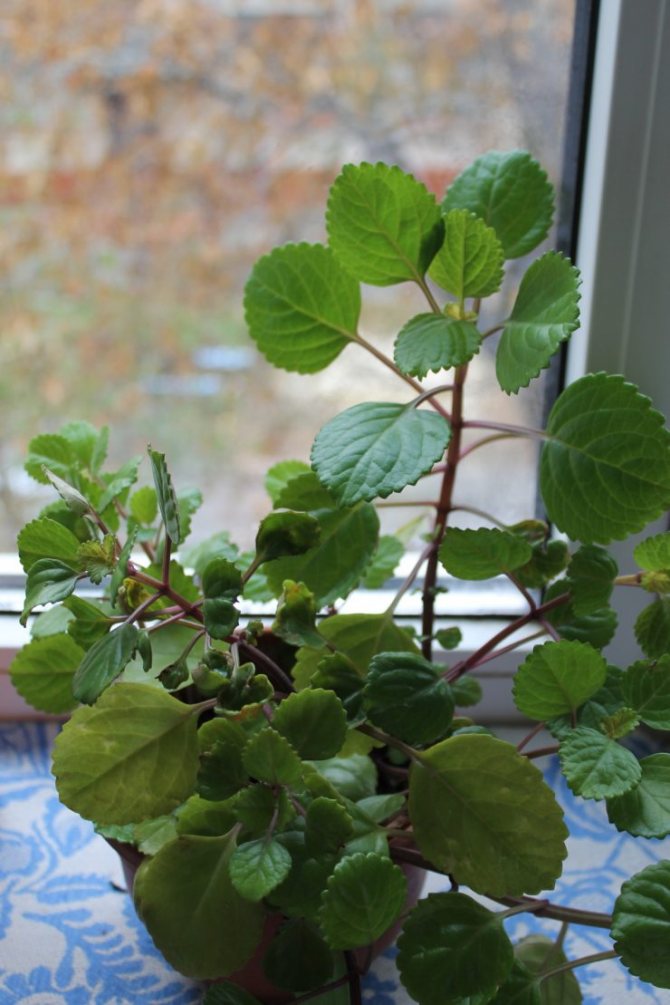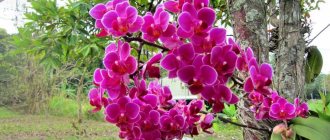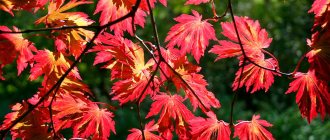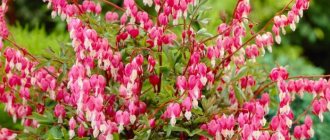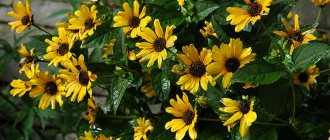Plectrantus is a perennial or annual plant of the Lamiáceae family.
The name is based on lat. Plectranthus, are the Greek words plectron - "cock's spur" and anthos - "flower". Therefore, it is also called a spur flower. The species numbers over 350 representatives.
Homeland is South Africa. The plant is also common in India, Australia, Japan, Polynesia, Malaysia.
He became a favorite in Scandinavia, where it is called "Swedish ivy". In Russia it is very often called "room mint", "molar tree". This is due to the fact that all varieties of filmntrantus secrete essential oils that exude a camphor aroma and thereby repel moths.
Some types are used in medicine, cooking, perfumery.
general description
The evergreen shrub Plectranthus or bristle grows an average of 60-70 cm in height. It belongs to the Labiate or Lamb family and has about 250-320 species. In the wild, it is found in Madagascar, Indonesia, Australia, Japan, Polynesia, the Pacific Ocean. Known for its beneficial properties. The leaves are used in many countries as a spice, and the mint scent repels insect pests. Adherents of traditional medicine use it as a medicine for:
- flatulence;
- nasal congestion;
- asthma and frequent coughing;
- urinary incontinence;
- diaper rash and diathesis;
- inflammation of the gums and throat;
- insomnia and headaches.
Decoctions and tinctures are made from the leaves, which are used for inhalation and aromatherapy.
The branched branches of the plectrantus spread along the ground or grow vertically. It has a pubescent or bare dense stem with brownish-red or bright green skin, as well as fibrous rhizomes. Oval or ovoid leaves grow on short processes in cross-like pairs. At the edges, they are covered with small teeth and are pronounced by a noticeable network of veins. The foliage exudes a pleasant aroma of spice or mint.
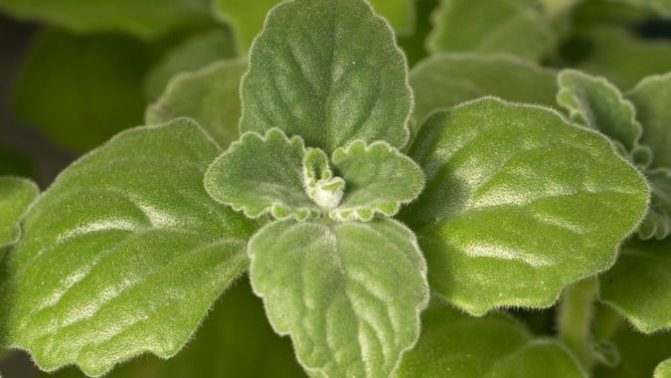
Numerous branchy shoots of an ornamental shrub most often hang down under the weight of the foliage, so after buying it is better to immediately transplant the bush into a hanging pot or flowerpot. In summer, during the flowering period, small umbrella flowers (lilac, cream, white or violet-blue, depending on the variety) are barely visible between the succulent leaves. It is better to cut them in order to preserve the high decorative qualities of the plant. If the inflorescences are left, fleshy fruits form in their place, inside which small nuts ripen, which open after final ripening.
Use in traditional medicine
The healing properties are due to the presence of essential oils.
Useful properties of bristle flower:
- protection against moths;
- use in cooking;
- pleasant soothing aroma;
- releases phytoncides that purify the air and have a beneficial effect on the nervous system;
- has medicinal properties.
It is Plectranthus amboinicus that is used in folk medicine. It is used as an anti-inflammatory, itching, diuretic, sedative.
Gruel made from freshly cut greens will help relieve itching and swelling after an insect bite. Tinctures and decoctions are used to gargle the throat - this destroys pathogenic microflora and relieves inflammation.
As an additional therapy, it is used to treat weeping diathesis and diaper rash. This will require dried herbs.
Herbal baths can help treat urinary incontinence in children (enuresis). Pour boiling water over half a glass of leaves and leave for 1.5 hours. Filter and add to the collected bath. Take a herbal bath 15-20 minutes before bedtime.
Chewing the leaves helps to calm a paroxysmal cough, relieve nasal congestion.
The fresh mint aroma has a positive effect on the nervous system, relieving headaches, eliminating insomnia. You can also use teas with the addition of "room mint" for this.
Plectrantus has no harmful properties, however, its use is contraindicated in pregnant women, hypotensive patients, people with individual intolerance. In these cases, a violation of the general condition, local reactions is possible.
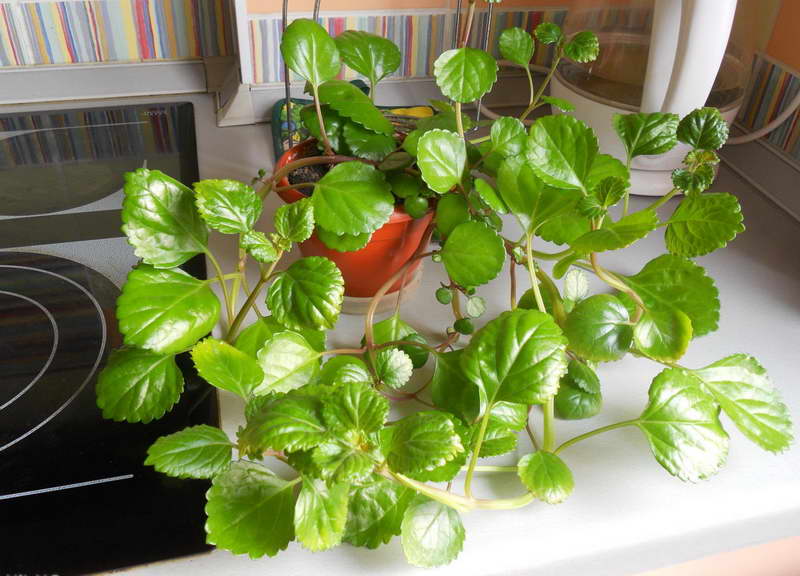

Plectrantus ampelous
Types of decorative flower
Indoor mint or plectrantus comes in many varieties. Some of the varieties are not at all similar to each other:
- Plectranthus blumei (Plectranthus Blume). Hybrid ornamental variety with emerald foliage with elongated or pointed tops. It grows up to 80 cm. Closer to the roots, flower stems often begin to lignify.
- Plectranthus amboinicus (aromatic). In nature, such a branched shrub sometimes reaches 2 meters. Its purple tetrahedral branches are densely covered with broadly ovate leaves with glandular villi below. At the beginning of summer, such a bristle flower is covered with fragrant bluish flowers, connected in small inflorescences.
- Plectranthus ciliatus (ciliate). Purple short hairs are visible on the stems. It is a creeping flower with elongated or broadly ovate leaves with dense pubescence. Light purple or white flowers appear as inflorescences or occur singly.
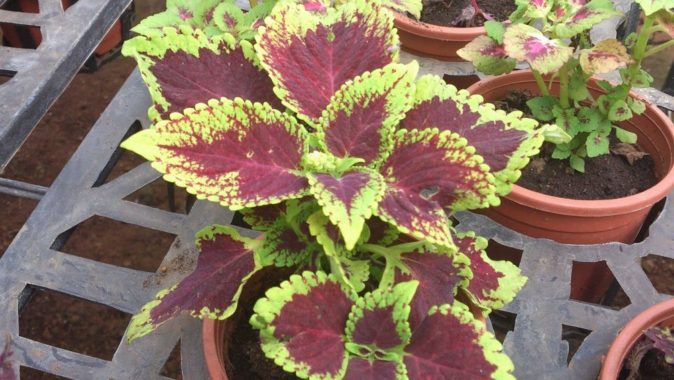

Plectranthus blumei (Plectranthus Blume)
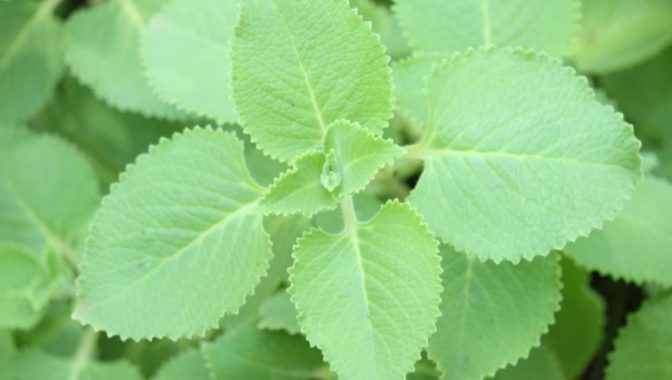

Plectranthus amboinicus (aromatic)
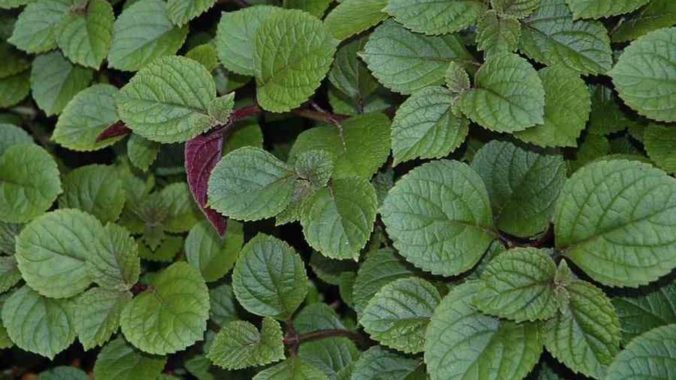

Plectranthus ciliatus (ciliate)
- Plectranthus hadiensis (felt). Grows up to 70 cm in height. It has fleshy light green leaves covered with fine hairs. In summer, the fluffy flower is covered with small purple flowers.
- Plectranthus australis (southern). An unpretentious bristle flower with bright green foliage, as if covered with wax. Its shoots are rather weak and hang down under the weight of dense foliage.
- Plectranthus fruticosus (shrub). It is also known as the "molar tree", which exudes a strong mint smell. The plant has broadly oval leaves pointed to the ends and pubescent branches. This variety blooms very profusely, with pale blue flowers.
- Plectranthus coleoides (coleus). It is widely used in indoor breeding. The shrub has crenate, fleecy leaves, tetrahedral stems with a fringe and grows up to 1.5 meters high.
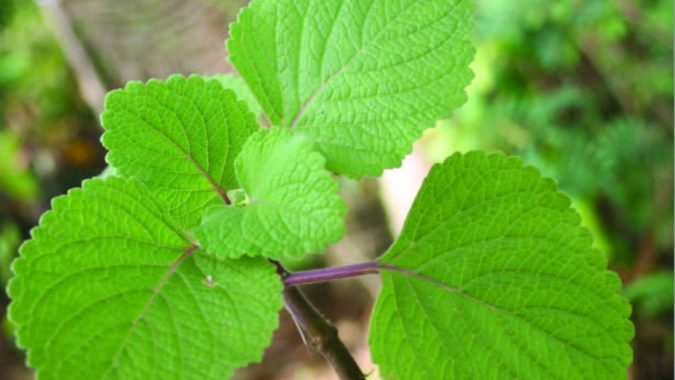

Plectranthus hadiensis (felted)
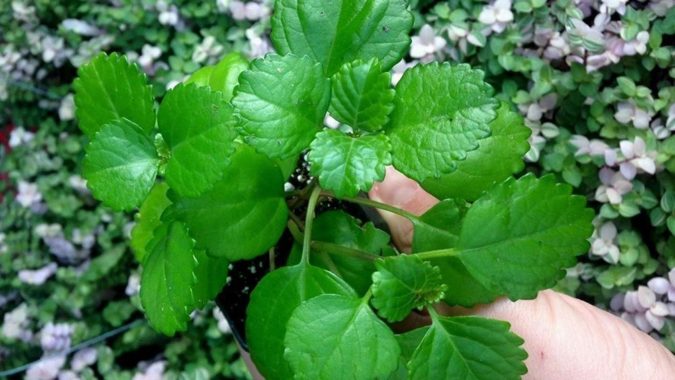

Plectranthus australis (southern)
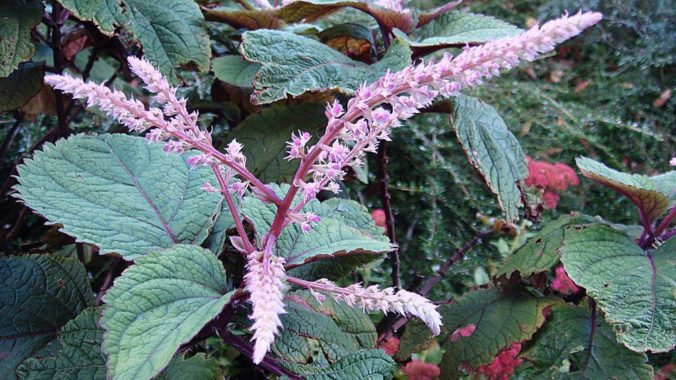

Plectranthus fruticosus (shrub)


Plectranthus coleoides (coleus)
Plectrantus looks great in the interior and has thick beautiful foliage. To preserve it, you must adhere to some rules of home care.
What kind of soil is needed
The soil should be nutritious, light, moisture and air permeable, and slightly acidic (pH 6).
You can use ready-made soil for indoor decorative deciduous plants or make it yourself by mixing in equal proportions:
- river sand or perlite;
- deoxidized peat;
- leafy ground.
Before using the soil mixture, it must be steamed or frozen - this will disinfect the substrate and help get rid of pests.
Air humidity and proper watering
At home, plectrantus is actively growing and developing without any special problems and complex care. It does not need to increase or decrease the level of humidity, although in the winter season it is better not to put it next to a hot battery. If there is no other place for the plant, then it is necessary to moisten the fluffy bushes by substituting pallets with hydrogel, wet gravel or pebbles under the pot. Plain-leaved varieties of room mint can be sprayed with clean water several times a week.
In the spring-summer season, the bush is abundantly watered with settled soft water at room temperature, but only when the top layer of the earth has dried up. In winter, the frequency of watering is reduced, once every 3-4 days is enough. But if the flower is provided with additional lighting with a phyto-lamp, and it continues the period of active growth, watering is carried out in the same mode as in spring and summer.
Home care
The maintenance of the flower is not difficult - it is easy to care for it. The best place to place the plant will be window sills located in the east or west. Although indoor mint is photophilous, if you place it on the southern, sunny side, a loss of decorativeness is possible (the foliage will become small and inconspicuous).
In winter, flowers need additional lighting. The flower feels great in the fresh air. It adapts very easily to temperature and weather fluctuations. The optimum temperature for it is from 12 to 25 ° C.
At high marks on the thermometer, the plectrantus begins to fade, evaporating the accumulated moisture. At this moment, he needs to be moistened with a spray bottle.
Watering is moderate. The plant can react to excessive moisture by rotting the roots. And on overdried soil - by dropping of buds. In winter, the amount of watering should be slightly reduced.
Fertilize the soil once every two weeks. It is better to alternate the use of mineral and organic fertilizers. As a top dressing, universal preparations for decorative deciduous indoor flowers are suitable.
Pruning is necessary in the spring. The branches are shortened in half. After pinching, so that new shoots appear. This allows you to beautifully form the crown, improve deciduous volume. Weak and overly dense branches are removed throughout the year.
The size of the pot should be selected. Strong strong roots should fit easily into the chosen product. Low and wide will not work, so there is not enough space for proper drainage.
An ideal soil is an equal amount of humus, earth, turf, sand. Any nutritious soil will do as well. Until the age of three, an indoor flower with a mint smell needs to be replanted annually. After this period, much less often.
About the nuances of caring for a plant in the video:
Temperature control and lighting
Plectrantus belongs to subtropical crops, but it loves diffused light more than direct sunlight, so it is better to put the pot on the southwestern or eastern windowsill. Foliage increases in volume at a temperature of + 18-23 degrees. In the winter months, in a room with a bush, you need to maintain the air temperature at + 12-18 degrees. So that the shoots do not stretch out, do not become bare, and a thick leaf mass is preserved, it is advisable to additionally illuminate the flower with a special phyto-lamp in the winter season.
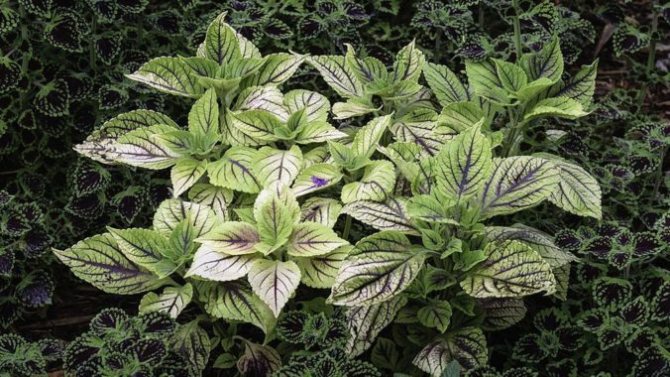

Signs
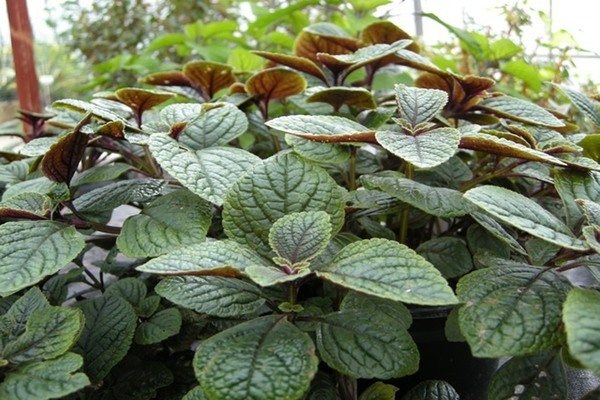

Most gardeners do not fully know whether it is allowed to cultivate a bristle flower in their indoor conditions. Indeed, there are many signs and superstitions revolving around culture, there is an opinion that it absorbs bad energy and attracts success and money. Moreover, the plectrantus brings success to both the owner and those who at least once participated in his departure. Therefore, the flower is perfect for both home and office space.
Reproduction
Sparrow propagates by cuttings or dividing the bush. In the latter case, when transplanting a flower into a new pot, it is divided into several parts with large shoots and developed roots. Places of cuts are sprinkled with activated carbon. Seedlings are separated with a sharp knife. After transplanting, each bush is darkened for several weeks, that is, put in partial shade and periodically abundantly moisturized.
For propagation of an ornamental plant by cuttings, shoots 5-7 cm long will be required.In order for them to take full-fledged roots, they are placed in a jar of plain water, but before that, the lower cut is soaked with a rooting solution. After the appearance of root shoots, the cuttings are transplanted into small pots or immediately into hanging pots. They are filled with a mixture of leafy earth, humus, river sand and turf.
Is bonsai suitable for formation?
Some types of plectrantus over time form a caudex - a thickening between the roots and the crown, subject to regular pinching and work on branching, giving the plant the appearance of a miniature bonsai-style tree.
For rejuvenation and obtaining a more lush crown, you should pinch young shoots annually in spring and half-shorten the old shoots that have stretched out after winter.
Expert opinion
Mokhov Andrey Petrovich
Graduated from KubSAU specialty: agronomy
Dry branches affected by diseases or pests can be pruned throughout the year.
Transfer
All lovers of decorative flowers know that homemade mint is a fast-growing shrub. In a short period, its roots fill the pot, and a transplant is required. Usually it is carried out once a year. The new container is taken deeper and wider. Fresh soil is added. A drainage layer, for example, from small pebbles, is laid out on the bottom of the new pot. After transplanting, watering is carried out, but it is not advisable to fertilize the flower during the first 2-3 months. A perennial slow-growing plant does not need a transplant at all. It is enough just to fertilize it once a year and change the topsoil.
Landing
In order for your decorative mint to take root and not die, you need to prepare a little. The plant will not tolerate increased acidity in the soil. The soil for planting should be fertile, of high quality, you can either buy it in a store or make it yourself.
Popular: Shrubs of asparagus (sprargus) in the interior of the house or garden
Before filling the soil into the pot, it is necessary to lay out a drainage layer, three centimeters high. As which you can use small pebbles, broken brick or expanded clay. Then you can start disembarking. It is important, when filling in the roots of the plectrantus, not to tamp the ground. Firstly, it can damage the root system, and secondly, the bristle flower loves loose, breathable soil. At the end of planting, the plant must be watered abundantly.
Pests and diseases
Under bright sunlight, the foliage of the plectrantus quickly fades and begins to fall off if the pot is constantly in the shade. The leaves wither, and the shoots wilt when the root system is not sufficiently moistened. Due to high humidity and frequent watering, the flower becomes sick with powdery mildew. Gray spots appear on it.
Often, the bristle flower infects the spider mite, whitefly, scale insect or aphid, which suck out cell sap and nutrients from the shoots and leaves. They are taken out with special insecticidal solutions, which are sprayed on the bush on the street or on the balcony. It is impossible to manually wash the stems and foliage from parasitic insects, since they are covered with a protective edge.
Coleus Plectranthus
The name of the species indicates identity with the familially related Coleus. In this species, the branches are upright, and the leaves are larger than all others.
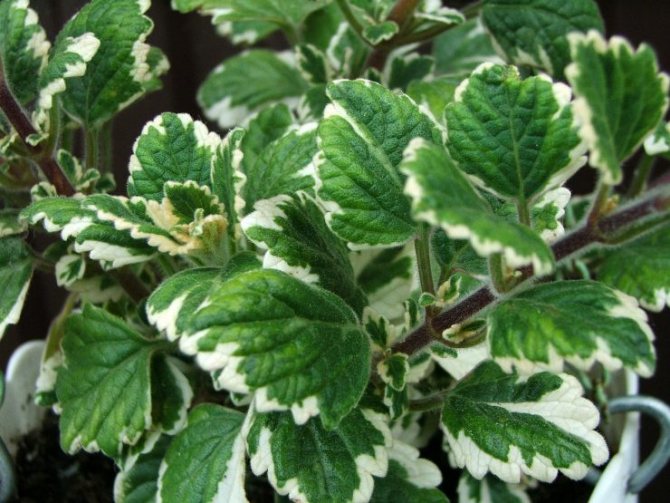

They grow up to 6 cm, edged around the edges with a white or beige stripe. They are covered with spots of the same color.


Let's summarize
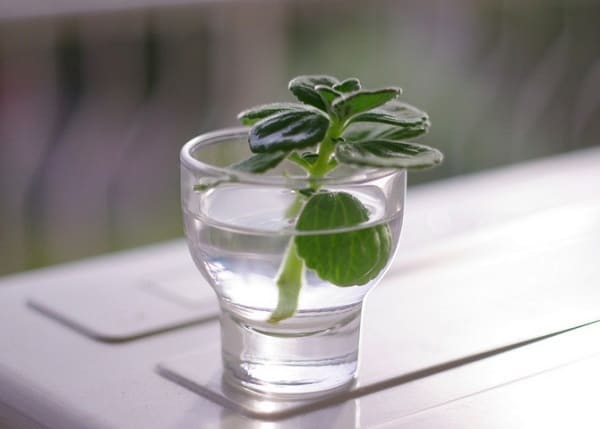

- In our country, more than ten species of plectranthus are grown. Most of them have pubescent leaves, some are glossy. Almost every flowerpot has an exclusive scent of leaves that unfolds when you touch them.
- Signs consider the plant to be happy. For example, superstitious people grow plectranthus to lure wealth and good luck into the house.
- There is also a negative omen associated with this flower.If the flowerpot, despite proper care, withers and dies, you are destined to know a life "bummer" (most likely in the financial arena).
You will learn about the intricacies of growing this plant, as well as vegetative propagation of plectrantus from this video:
Wintering
In the case of growing plectrantus in a flower bed, the plant is dug up for the winter and transferred to the room. With the onset of frost, watering and fertilization of the plant are sharply reduced. It is important to reduce not only the frequency but also the amount of watering. In addition, the shrub needs infrequent spraying.
It is necessary to keep the pot in a cool place in winter with diffused light or slight shading. When white traces or dullness appear on the leaves, the pots are placed in a brighter place.
Plectrantus Ertendahl
This view also has its own characteristics. He is considered the most beautiful of all the others. Exquisitely carved two-tone leaves, green on top and red on the bottom, have a soft velvety finish. It is cut with veins of a paler tone, which create a bizarre pattern on the surface of the leaf.
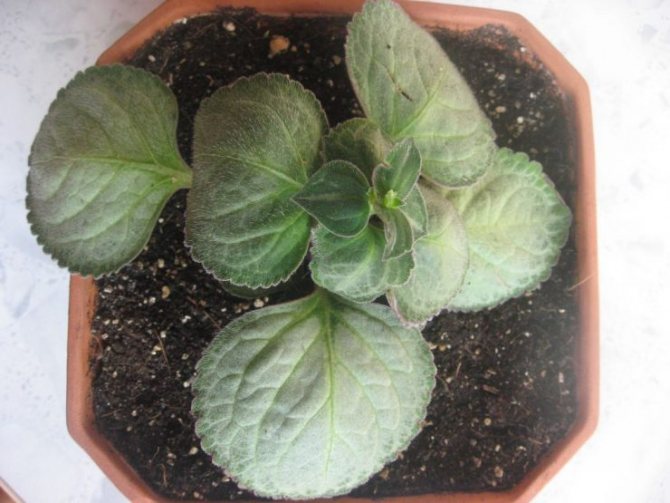

The fragrance emitted by it resembles the smell of camphor.
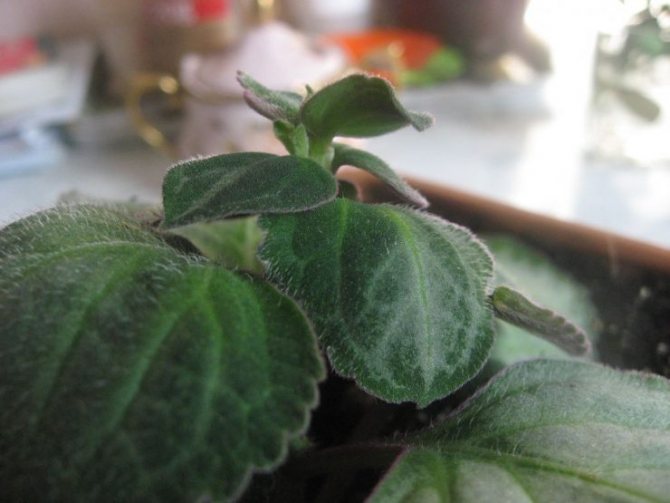

More than other species, it needs care. To maintain the shape of the bush, you have to constantly pinch it.


Collection methods
Leaves are collected from mint bushes according to certain rules that must be followed so as not to harm the plant:
- harvest plectrantus, pinching off the leaves from it in different places, while observing the symmetry of the bush;
- 0.5 cm of the leaf sinus is left near the stems.
Careful harvesting helps to form a decorative-looking plant and stimulates further growth. In the places of the collected leaflets, new ones will appear soon.
Spread
In its natural habitat, the bristle flower is common in the subtropical and tropical areas. Found in the wine of small shrubs in southern Africa. The plant lives along the shores of the Pacific Ocean, on the island of Madagascar. Some varieties are found in the northern part of Australia. Some varieties naturally grow in the Indian part of the mainland, Asia and Malaysia.
Ease of care and good survival rate under growing conditions make it possible to cultivate certain varieties of plectrantus in Scandinavia and other conditions of a harsh climate. Also, the shrub is widely known in temperate climates - Russia, Ukraine, Poland. A large number of hybrids grow in all parts of the world as indoor plants.
Plectrantus Photos
Drink recipes


Mint tea
Mint tea is considered one of the most popular drinks. Its preparation takes a minimum of time, it can be drunk both hot and cold. For cooking, several leaves are boiled with boiling water and infused for about 5 minutes, after which they are filtered and various spices are added, such as:
- Sugar;
- Lemon;
- Honey;
- Ginger;
- Berries;
- Syrup.
For the base, both black and green tea prepared in the usual way are suitable. You can also use mint in combination with other herbs (chamomile, rose hips, thyme, etc.).
Non-alcoholic mojito
To prepare this drink you will need:
- Sprite soda or mineral water (for those who don't like too sweet taste);
- Mint about 20 grams;
- Lime or lemon (can be mixed);
- Sugar or syrup;
- Ice.
Lemon, lime and mint leaves should be thoroughly rinsed and dried, then chopped. In a glass, you need to combine these ingredients with sugar or syrup and knead to get juice. Arrange the resulting mixture in glasses and pour lemonade, add pieces of ice.
Possible problems
Inexperienced growers often face problems with growing plectrantus. Despite the fact that the shrub is not picky about the growing conditions, so that the plant continues to turn green and fluff, it is necessary to avoid and solve problems with the plant in time, such as:
- The foliage of the shrub becomes yellowed and lethargic - often the reason for this condition is the low air temperature in the room where the shrub grows. In this case, with a prolonged stay of the plant in this state, the rhizome begins to rot. When the first yellow leaves appear, it is necessary to eliminate them. The flower is placed in an optimal climate, in a sunny place.
- Lack of water in the ground can also cause drooping stems. You can check this condition by checking the dampness of the soil with your finger at a depth of more than a centimeter. When the problem is eliminated and the watering is normalized, the flowers quickly return to normal.
- When exposed to direct sunlight, leaves burns. After fixing the problem, the flower is restored, however, it is necessary to remove the damaged parts.
- If spots appear on the plant, the problem with excess moisture in the soil should be solved. Powdery mildew appears on the plant, which is the first sign of liquid overflow into the ground. You can help the plant restore the splendor and abundance of foliage by spraying the flower with serum.
In addition, in the absence of flowering, it is worth thinking about the fact that the plant does not have enough light. Since the plectrantus easily tolerates movement, the flower pot is simply rearranged to a more suitable place.
Medicinal use
This plant is often used to create a special atmosphere in the home, as the minty and refreshing scent exuded by its foliage gives it a relaxed note.
A pleasant addition is the fact that flying insects, which rarely fly into the room, do not like the scent of the plant. One of the names of the plant is the fly-eater.
The medicinal properties of the plant are primarily in the sedative nature of the action of tea from its leaves. It helps with:
- anxiety;
- insomnia;
- excessive nervous tension.
Tea from the leaves and from coughs helps a lot, having mucolytic expectorant properties. Patients using the drug note choleretic and diuretic properties tea from plectranthus leaves. Tea helps well against gastrointestinal diseases: relieves irritable bowel syndrome, diarrhea, helminthiasis. Plectrantus copes well with rheumatoid arthritis.
However, in order to avoid the negative effects of an unknown drug on the human body, you should still consult a doctor.

